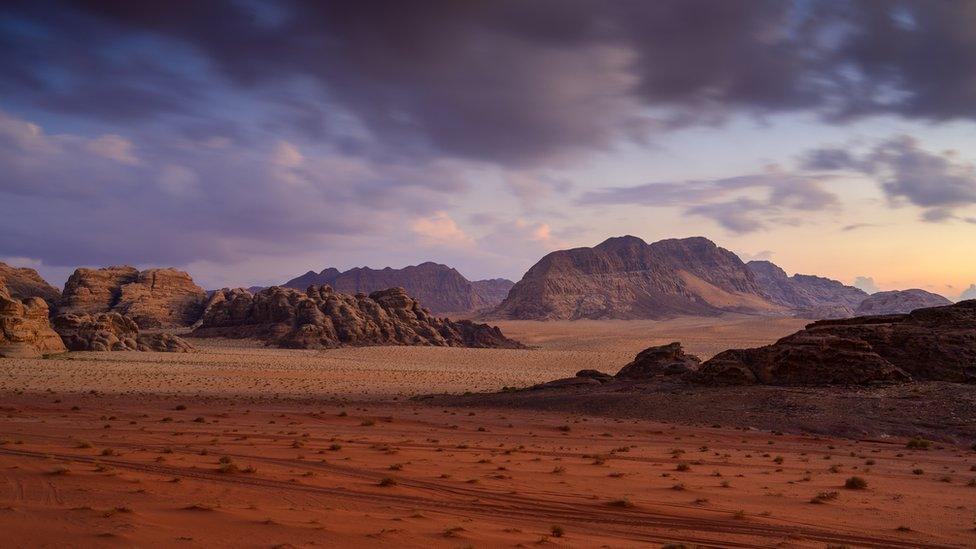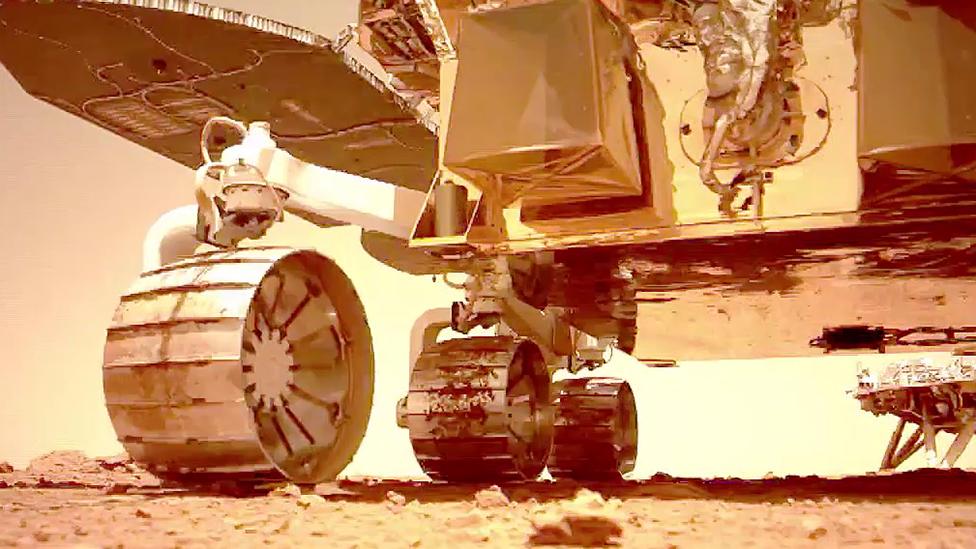Scientists have determined the thickness of Mars' crust
- Published
- comments

The red planet: this 3D image shows us what it may look like on the surface of Mars, but what do we now know about underneath?
Scientists have used data from three studies to determine the thickness of the crust on Mars by using 'Marsquakes'.
Researchers used data from Nasa's InSight mission to make the discovery.
The probe, which landed on Mars in 2018, has a seismometer. That's a technology which can sense vibrations underneath the ground.
They determined that beneath the InSight landing site, Mars' crust was approximately 20 kilometres or 39 kilometres thick.
By learning more about what is underneath a planet's surface, its crust, mantle and core, scientists can learn more about Mars' formation and evolution.
WATCH: What will the Nasa InSight probe be doing on Mars?
Marsquakes
Before the InSight mission, little was known about what goes on underneath the surface of Mars.
By using the data from the probe, which measures the vibrations of a 'Marsquake' underneath the surface, scientists can get more accurate measurements of Mars' crust.

Scientists learnt about the layers underneath Earths surface by measuring vibrations,now they are using this method to learn more about Mars
Mars doesn't actually have tectonic plates like Earth does, but scientists believe that vibrations under the surface could have been caused by meteorites hitting the surface.
Scientists use the information learnt from measuring the waves that travel through a planet after a seismic event - this is like an earthquake - and it's actually how they learnt what is underneath the surface of our own planet.
The crust and mantle on Mars are made up of different type of rock, so they can use the data to look at the different layers of the crust.

The InSight rover: the sensors on the rover were developed by scientists from the UK and France and it is designed to measure vibrations underneath the surface
What's under Mars' surface?
The data suggests that the top layer at the InSight landing site is eight kilometres thick, but there could be two kilometres higher or lower than that.
After this layer, another separate layer follows which is 20 kilometres, but could be five kilometres higher or lower.
This suggests to the scientists that Mars has a thinner crust than Earth does. Dr Knapmeyer-Endrun, who worked on the study, said: "It is possible that the mantle starts under this layer, which would indicate a surprisingly thin crust, even compared to the continental crust on Earth."
There is a third layer on Mars, which is 39 kilometres thick, but could be eight kilometres higher or lower.
- Published21 June 2021

- Published28 June 2021

- Published20 July 2021

